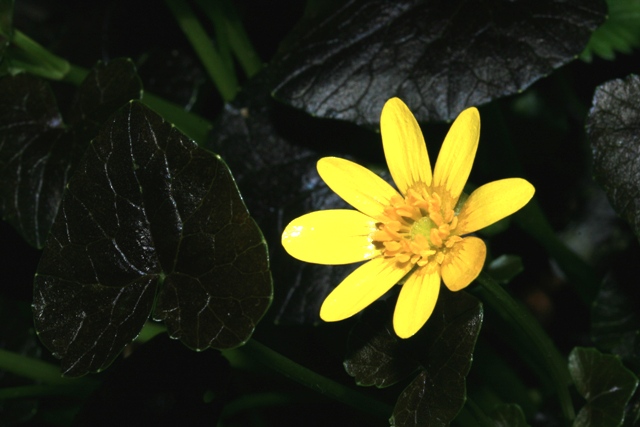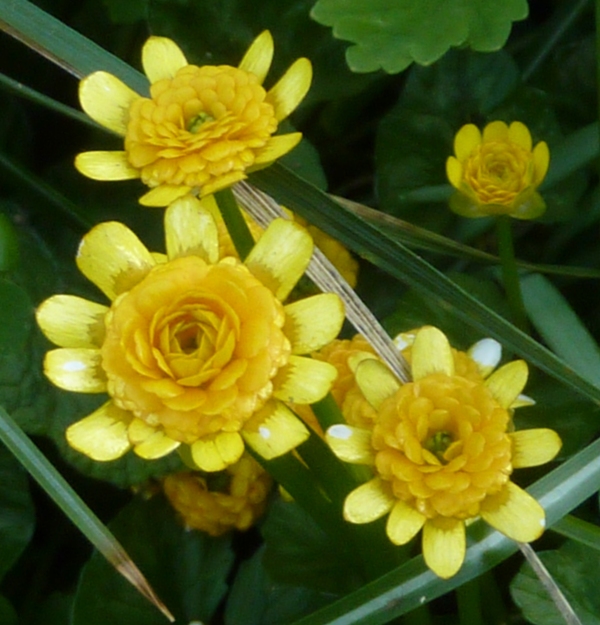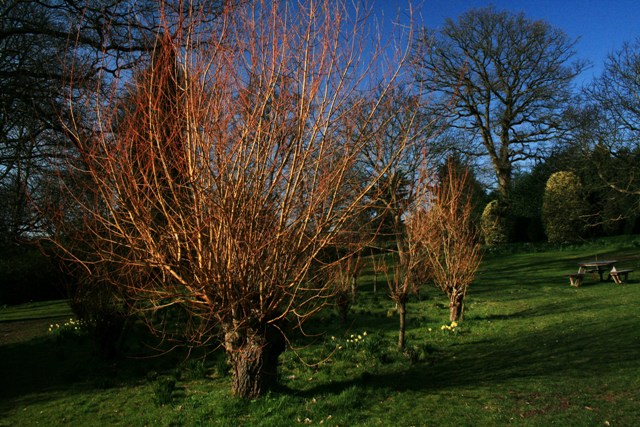As I wrote in a recent blog, I would like to re edit most of the last year’s blogs as we now have the Gutenberg editing and this makes the blogs more beautiful and pleasant to read!
As in any science there are some difficult words and terms used of which I would like to explain some this week.
If not explained you will often find a link on the ‘difficult’ word which will guide you to an explanatory page.
So first of all there is Botany and their is Etnobotany.
It is thought of having near enough 4800 species of plants growing on these Islands. (from ‘New Flora of the British Isles’, Third edition by Clive Stace- this book will be referred to all the time and just shortened to Stace). There is now also a fourth Edition!
However many of our native species have been introduced as an ornamental or for other useful purpose!
It is not so easy to define what is really native and what isn’t and we can also define native of being native of a particular habitat or geographical range.
Some natives are in a tiny area of the Country only whilst some alien, introduced plants are very much ‘native’ all over the country!
Good examples are the Buddleia, Himalayan Balsam and Japanese Knotweed to name three of the better (or worse?) known ones! For the purpose of this blog I would like to include natives of the entire British Isles and even if they have been introduced many (hundreds) years ago.
Stace mentiones the word archaeophyte frequently in the descriptions of the plants.
‘An archaeophyte is a plant species which is non-native to a geographical region, but which was an introduced species in “ancient” times, rather than being a modern introduction.
In Britain archaeophytes are considered to be those species first introduced prior to 1492, when Christopher Columbus arrived in the New World and the Columbian Exchange began.’
Those arriving after are called neophytes.
A very good write up about neophytes in Birmingham and the Black Country is given on page 63 of the first ‘Flora of Birmingham and the Black Country’ by Mike Poulton.
“In the world of plants ‘Neophytes’ is the name given to non-native plants for which there is no evidence of introduction into the UK before 1500 AD. This date reflects the discovery of the Americas in 1492, since when we have received many New World species.
Other introduced plants do not normally persist in the wild and are known as casuals, but in fact the process of establishment in a new country has many stages. Most neophytes remain confined to secondary habitats, but some are capable of invading old woodlands and other valuable wildlife sites.
Of the 1449 species, hybrids and recorded subspecies currently established in the Black Country, 555 are considered to be neophytes in Britain (Preston et al. 2002). They include many of the popular garden annuals, perennials, shrubs and trees, some of which are now thoroughly naturalised in the British Isles, but also those plants whose introduction causes harm to human health, economic harm or environmental harm.
Twenty-five of these are now listed in Schedule 9, Part 2, of the Wildlife and Countryside Act 1981. It is against the law to plant or otherwise cause to grow these in the wild”
Many plants mentioned in the New Flora are also ‘Intrd-natd’ meaning that they have been introduced often as an ornamental-garden plant and ‘escaped’.
These plants may be mentioned if they are especially interesting, however I will try and write more about the obvious native or wild plants rather than the cultivated and improved plants we like to grow in our gardens.
I recently learnt about the term ‘nativar’, this a very useful term which is derived as something in between a native and cultivar.
They are the more unusual and often more attractive varieties of the normal wild form. For example the common Lesser Celandine or Ficaria verna has got 4 wild subspecies but it has also several cultivated forms with either different coloured flowers, double flowers or dark red foliage as for example in the ornamentally grown Ficaria verna ‘ Brazen Hussy’.

Ficaria verna ‘Brazen Hussy’ 
Ficaria verna ‘Collarette’
Some forms (f.), varieties (var.), subspecies (spp.) or cultivars (cvs.) are selected for their usefulness. So has the Cricket –bat willow or Salix alba ssp. caerulea been found in the wild but has been selected and is cultivated to use in the cricket-bat making industry! The form ‘Britzensis’ is a very attractive orange-red stemmed selection of the natural form S. alba var. vitellina, which is used sometimes in gardens.

Some of the ‘alien’ weeds which the Victorian introduced as ornamental such as the Japanese Knotweed, Giant Hogweed, Rhododendron ponticum or the Himalayan Balsam were so grateful for their cultivation here that they are ‘thriving’ sometimes out of control! But without their natural competitors or habitat-constraints they might have in their native country this is exactly what they do.
Any plant likes to grow either by vegetative means when the conditions are good, or by producing flowers and seeds if these conditions are less favourable.
They will also produce seeds as an opportunity to evolve as some better adapted offspring for the new generation. This is why we find natural varieties, or subspecies of wild plants on some island, peninsular or mountain top as they were selected by the climate restrictions and special conditions.
So how am I going to teach you about all those so called ethno-botanical plants of Britain?
If you study plants in Horticulture you may find them under different horticultural term headings such as
- Trees,
- Shrubs,
- Herbaceous Perennials: subdivided in various sections such as Climbers, Bulbous plants, Evergreens or Deciduous, Aquatic Plants, etc. Then we have the
- Biennials; which make foliage in their first year of life and then flower, seed and die in their second year and finally the
- annual plants which do all this within the year: sometimes they even have several generations in the one year if conditions allow!
But there is also a scientific division or classification of plants which I would very much like to use and put in a chapter of its own, to be referred to by you or myself.
A Botanical Garden is a place where we practise classification of plants and for a very good reason. It always follows the order from very low, primitive plants to highly evolved and modern plants.
For the vascular plants I place in my blog (i.e. all plants with vascular bundles: ferns, conifers and the flowering plants) I will aim to follow the order of modern Floras such as that of ‘Stace’s New Flora’; this is to follow some recognised system.
I like to honour this outstanding work and through my blog also hope to make this work more popular for people to read. I must confess always to be a sucker for pictorial floras, but doing this blog has given me more confidence to use the Flora in future. The flora is actually very user friendly in that is does not use too many complicated words and has some illustrations as well complimenting the work.
For the beginner and people like myself, it is still useful to have a pictorial flora as well (such as ‘The Wild Flower Key’ by F. Rose and Revised and updated by C. O’Reilly) but only Stace’s Flora can determine the correct species in most cases.
Write up of ‘The Wild Flower Key’:
‘This wild flower identification guide was first published in 1981 and is still widely accepted as the best of its kind for its combination of meticulous illustrations and the use of keys to aid recognition. For this new edition the Latin names have been revised in accordance with the current classification system. It is now published as the ideal book for the serious student of British and north-west European wild plants, providing a bridge between picture identification guides and the non-illustrated academic floras.’
Write up of ‘New Flora of the British Isles’:
‘Since its first publication in 1991, New Flora of the British Isles has become established as the standard work on the identification of the wild flowering plants, ferns and conifers of the British Isles. The Flora remains unique in many features, including its full coverage of all our wild plants in one volume, its user-friendly organisation, its line drawings and photographs of critical features, and its specially compiled keys and descriptions. All native, naturalised, crop and repeatedly occurring casual plants are included. The fourth edition is stitch-bound with a flexible plastic cover, ensuring durability and utility in the field. In the nine years since the appearance of the Third Edition, many new data and ideas relating to our wild flora have become available. More than 200 species and hybrids (including 5 newly discovered native species and one neonative) have been added to the text of this fourth edition but, in order to establish it as a truly Twenty-first Century Flora, alien species that have not been recorded in the British Isles since 1999 are omitted from the main text, although those newly omitted in this edition (about 90 taxa) are retained in the keys. The third edition (2010) was the first British Flora to incorporate the new molecular system of classification based primarily on DNA sequences, a scheme that is expected to endure for centuries to come at the family level. However, new discoveries from this research are continually being made, necessitating numerous further changes at lower, particularly the genus, levels. These have been incorporated but, where the evidence is in any way equivocal, the status quo has been retained pending the arrival of better data. Caution is preferable to changes that have to be reversed later. Apart from this, innumerable adjustments have been made to the descriptions and keys, the distributions (especially of hybrids) have been updated, and the categories used to summarise native/alien status have been altered in line with modern thinking. These revisions should ensure that this Fourth Edition remains the essential reference source for all taxonomists, ecologists, conservationists, landscape planners, plant hunters and biogeographers, whether they be researchers, teachers, students, professionals or amateurs.’
This blog will most likely only mention the more common true native plants and known to be ‘used-by-men’ plants and this will be a lot less than 1000 species but for now I don’t have the correct number of those plants which will be a revelation at the end of this blog!
It is often difficult to know whether a plant is a true native and the reader has to revere to a good flora such as New Flora by Stace. They will mostly have a common or many common and local names and I will try and mention those as well as of course the scientific names.
An interesting fact I thought was that Stace himself has grown (by accident or purpose) about a quarter of all the plants mentioned in his book either in his own garden, several other gardens as well as the University of Leicester Botanical Garden and has seen them all growing in the wild! ( from the Introduction xxi).
If the reader of my blog would like to know the exact species of a plant it is essential to refer to a good flora for identification purposes which also gives the locality and habitat as well as other interesting information.
Obtaining a local Flora-book is also very much recommended for appreciating plants in your own area. I recommend the earlier mentioned ‘Flora of Birmingham and the Black Country’ (2013) and also ‘The Flora of Staffordshire’ (2011).
I will not give a full description of each plant here or in all my posts but merely the uses. Hope to also add some pictures of the plant as well as pictures of the plant ‘in action’: i.e. their ethno-botanical uses! But you can find plenty of information and pictures in the links I provide on the plant names.
I may eventually even include mushrooms, lichens, mosses and seaweeds although these will be a lot more difficult or impossible to grow in a garden. But once a habitat is made for a main plant, other plants and animals will also be easier to attract and this is how the Dutch ‘Heemtuin’ works. For now and the purpose of this blog virtually everything is possible!
I will be using many people’s words from books and the internet as “Why invent the wheel when it is already there”?
Some of the books I use will be:
The four Flora-books I mentioned above as well as:
- ‘The Medicinal Flora of Britain and Northwestern Europe’ by Julian Barker , West Wickham, Kent, Winter Press, 2001.
- ‘Collins Pocket Guide Grasses, Sedges, Rushes & Ferns of Britain and Northern Europe’ by Fitter, R., Fitter, A. and Farrer, A., HarperCollins (1984)
- ‘Mabberley’s Plant-Book’, Mabberley, D.J. , 4th Edition, 2017 (1987), Cambridge University Press.
- ‘Hedgerow Medicine’ by Bruton-Seal, J. and Seal, M., Ludlow, Shropshire, 4th edition 2012, Merlin Unwin Books (2008)
- ‘Food for Free’ by Mabey, R. , 8th edition, 1977, London, Collins (1972).
- ‘The Herbalist in the Kitchen’ by Allen, G. University of Illinois Press, 2007
- ‘Plants for a Future: Edible & Useful Plants for a Healthier World, Fern, K. (1997) Permanent Publication, Hampshire, 2nd edition 2000 5th print in 2012. I will especially make use of Chapter twelve on page 229.
- Another very good source of identification are the folding guides of the Field Studies Council
The writing of this blog is going to be a huge job, but I would like it to be as interesting as possible for people to read. Having the scientific classification order as well as the horticultural order is going to mean each having their own chapter; but it is not very practical for myself and for you as the reader, could be a bit boring!
Therefore I will choose a rather haphazard way of going through entire families. Some families are small and others rather large so will have several posts.
CATEGORIESETHNOBOTANICAL GARDENING, NATIVE PLANTS,PLANT CLASSIFICATIONTAGSCLASSIFYING NATIVE PLANTS, DISPLAYING NATIVE PLANTS, PLANT BOOKS AND NATIVE PLANT FLORAS,USEFUL PLANTS, VIRTUAL ETHNOBOTANICAL GARDEN Ff�^?[��
